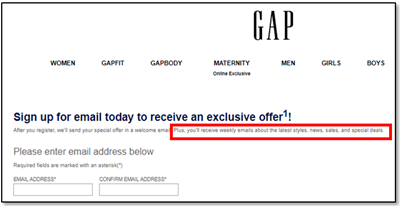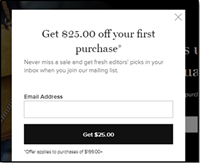Email marketing can be a complex beast, especially when it comes to getting your email delivered, into the inbox and engaged with.
One element that mailbox providers such as Microsoft (Hotmail/Outlook), Yahoo and Gmail use to determine your placement in either the inbox, junk folder or neither (!) is the amount of positive (and negative) engagement that your campaigns receive.
But what exactly is engagement?
Of course, it's the opens you're receiving, but it also goes deeper than that, looking at metrics (that are commonly hidden to you unless using 3rd party systems that allow visibility into them) such as whether subscribers reply to your emails, if they open and read your emails frequently, if your email has been forwarded or you have been added to a recipient's address book - all positive metrics.
Internally within your business, your Key Performance Indicators (KPIs) will also include metrics such as clicks and conversions (not taken into account for deliverability purposes as mailbox providers can't and don't track these), time on site after clicking through, video plays, downloads, repeat purchases, Average Order Value (AOV) and many more.
Negative engagement comes in the form of never interacting with your emails, registering a complaint (through the spam/junk button) or deleting them without reading, for example.
If you're seeing stagnant or decreasing engagement with your campaigns, you may be wondering... why?
Let's take a look at 4 reasons why subscribers may not be engaging with your emails right now and what to do about it....
1. They weren't clear on what they were signing up to
To not only comply with the new GDPR regulations but also nurture positive engagement with your campaigns from day 1, you should make sure you get an explicit opt in (non-checked) to give consent to send marketing communications. Alongside this, it is also important to ensure you are properly setting expectations of the benefits of your programme, what the consumer will receive from you and how often.
For example, on this email sign up form Gap make it really clear that subscribers will receive their emails weekly and the benefits of signing up:

The stronger the permission mechanism and expectations set at the point of sign up, the stronger the engagement level of subscribers with your campaigns in the future will be; there won't be any unexpected surprises which may cause them to complain.
Without the right people on your list, subscribers aren't going to engage with your emails going for war because they are probably not really interested in what you do (or not to the level you would like them to be), so this is a crucial first step in creating ongoing engagement.
WHAT TO DO ABOUT IT:
- Ensure you are using a non-checked, explicit form of consent
- Within your sign-up form's copy, really focus on the benefits that people will receive when they opt in to receive your emails - not just your opt in offer (if you have one e.g. 10% off your first order) but what they will receive and the benefits of actually reading your emails!

Source: Tradsey
2. You don't have a clear plan for your email marketing
Without a clear plan, how can you know where you are going, where you have been and what you want to achieve? Let alone track what works to engage your subscribers, what doesn't and what you're going to try next to improve your results!
You need to know exactly how you want to use email to underpin every other type of marketing you do and generate sales, otherwise you will find yourself floundering and not achieving the results you want from your broadcasts.
A well thought out and documented email marketing strategy will allow you to:
- Identify your best customers and help you to better understand their needs
- Implement the most relevant and targeted campaigns allowing you to gain the best possible results
- Assist in identifying prospects/ customers at different stages of the customer lifecycle, giving you insights into how best to serve their needs with the aim of moving them further towards making an initial or repeat purchase.
WHAT TO DO ABOUT IT:
A strong strategy is one what can be turned into actions. You therefore need to have a clear idea of the following elements to develop and action email marketing activities successfully. Ensure you have a documented plan in place detailing key points such as:
- Your strategy and goals - what do you want to achieve with your email marketing? How does it tie into the overall business strategy and goals? What is the purpose of email marketing for your company?
- Key tactics - what resources will you need? How are you going to achieve your goals and implement your strategy? What type of campaigns will you send?
What kind of tests will you run? At what stages during the customer lifecycle will these campaigns be sent? How will you use personalisation within your strategy to really connect with your audience? Will you use mobile responsive designs? How will you bring value to your subscribers?
- Specific actions you need to take - when will you send individual campaigns? What will the key elements of campaigns include? What offers will you include? What subject lines will you use? Who will be responsible for running your campaigns? What will the content of each email be? When will you run your tests?
Creating content calendar for your regular campaigns helps map out every piece of communication, from one off sends, to multiple message campaigns, and over time generally.
This ensures that each email works together to provide cohesive value and content, as well as supporting your wider marketing strategy and achievement of business objectives.
To do this, map out your regularly sent emails (e.g. daily, weekly or monthly newsletters, promotional emails, specific sales emails etc.) for the next 6-12 months on a calendar. Then note down any upcoming events (e.g. Christmas) and add in any emails that you might want to send around these, working backwards from the event.
Take this to the next stage by thinking about how these campaign fit into the customer lifecycle and how you could use automated campaigns to further expand this messaging. Think about your customers at each stage and identify which communications will make the biggest difference to the them? How can you help them move to the next stage or have a better experience/deliver the right information at the right time at the stage they are currently in? For example, implementing a welcome and on-boarding series to educated the subscriber about your brand, the benefits of shopping with you and encouraging an initial sale. Or a post-purchase series to enhance the customer experience by not only delivering information about their order being confirmed and product shipped, but also how to make the most of their purchase or other items that may compliment it that could also be purchased.
- Your results - how will you measure success? How will you calculate Return on Investment (ROI)? What other metrics will you record and analyse to demonstrate success?
3. You're not providing relevant content
If you don't know what your list will find relevant, interesting, helpful or useful, how can you provide it?
Knowing who you are speaking to is critical in order to create content that meets their needs and encourages engagement.
You need to know what interests or motivates them as well as what they need depending on the stage they are at in the customer lifecycle - e.g. just getting to know your brand, ready to make a purchase, loyal customers or inactive purchasers.
There are three main types of data by which to learn more about your subscribers to allow you to do this:
- Known data; collected directly from asking the subscriber such as name, date of birth or address or specific topic/product category interests in your business
If this isn't something you collect through your signup process, utilise a preference centre to allow subscribers to customise their email preferences such as the types of emails they receive or the frequency. Surveys can also be a great way to entice more information from your subscribers that can be used to make communications more relevant to different segments of users.
- Behavioural data; tracked behaviour on your website (visiting specific products/categories, adding items to the shopping basket and not checking out, not logging in for a certain period of time etc.) or with your email campaigns (not having opened/clicked on an email for a specific period of time, interacting with specific links etc.), for example.
Source: Warby Parker
- Purchase data; including what, when and how many times they've purchase, how much they normally spend etc.
Source: Amazon
WHAT TO DO ABOUT IT:
You have just seconds to capture the attention of the subscriber and interest them enough to take action on your email content.
By using these kinds of data to personalise your email content, segment your audience and send targeted communications to specific segments, or use dynamic content to change parts of your email to better suit each subscriber's needs, you will increase the relevancy of your messaging and therefore your engagement rates.
Source: Marks & Spencer
Start by conducting a data audit to identify the data you currently have about your subscribers and customers, what you would like to have and be able to use to better target and personalise your emails, and then where the gaps lie in between these two points. This will allow you to then create a plan as to the best way to start collecting this data and how you will use it.
Don't forget, don't collect any data that you don't need or won't use!
4. You're not testing anything
Testing is the one technique GUARANTEED to increase the results and therefore the sales you generate from your email marketing efforts.
Without testing, how can you ensure that you are proving information that your subscribers want and in a way that encourages engagement and action?
If you don't have a regular, documented testing strategy in place, you're missing out.
WHAT TO DO ABOUT IT:
Using A/B spilt testing you can find out the answers to all your questions such as, when is the best time to send an email, what content do my subscribers engage with the most, what type of subject line gets me the best open rates, and may many more.
But remember, only test one element at a time so that you know which change has made a difference to your results.
Start by defining your hypothesis; all too often I see companies running tests but not learning anything from them outside of that send. Starting with a hypothesis (e.g. We think that by using blue call to action buttons, we will see a higher click rate than when we use green call to action buttons), you can run tests over time to ascertain trends that will improve your engagement in the long term, not just in the moment.
And don't forget... Don't look at one metric in isolation when it comes to testing. I've often seen open rates decrease, but click and conversion rates increase for example - so if you had of looked at open rate in isolation, you would have made a decision that would not have actually benefited the email programme. Remember your end goal for the email and analyse thoroughly before making a decision to implement going forward.
Kate Barrett gave two presentations for the IDM Academy at Technology For Marketing 2017 (TFM) where she discussed ways to drive relevancy in your email marketing campaigns for increased success. Kate also teaches the recently updated Digital CRM course here at the IDM, aiming to help you understand how to effictively manage relationships with customers and communicate with them on an individual basis.
Did you find this blog useful?
At the IDM we are passionate about educating marketers and providing resources to help advance your career.
If you are interested in enhancing your CV and upskilling, browse through our wider range of marketing courses and qualifications; from one-day short courses to post-graduate diplomas.
Our learning and development team will be happy to advise based on your needs and requirements.
